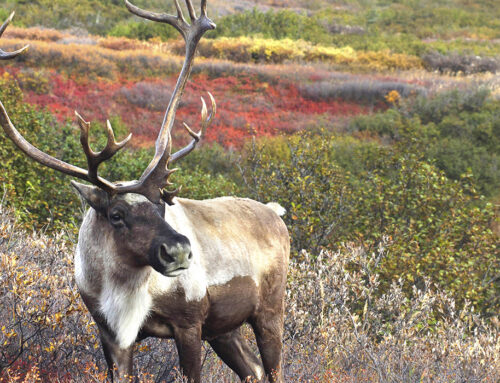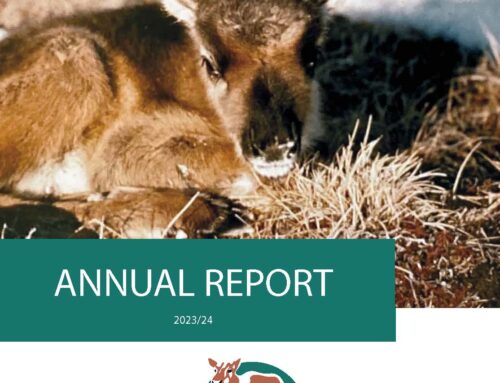May 29, 2024 – The Beverly and Qamanirjuaq Caribou Management Board (BQCMB) has long been upheld as a “model of co-management” for conserving barren-ground caribou. Now in its 43rd year, the board has just released a 10-year management plan that takes a step further by including actions other parties can take to help conserve the herds.
Caribou is Life: The Beverly and Qamanirjuaq Caribou Management Plan 2023-2032 describes how the BQCMB will work with people across the ranges of the Beverly and Qamanirjuaq barren ground caribou to follow two guiding principles–shared responsibility and prioritizing caribou in the caribou-people relationship.
BQCMB Executive Director Tina Giroux-Robillard notes the management plan was built on collaboration. “The “Shared Responsibility” principle is essential because we can’t do this alone–the herds have declined. So, we included activities for anyone whose actions or decisions might affect the health of the Beverly and Qamanirjuaq herds.”
The management plan is divided into four main priority areas–Watching the Caribou, Respecting the Caribou, Respecting the Land, and Community Connections–and each priority includes a list of suggested actions for the BQCMB, along with actions for community and regional organizations, individuals, Indigenous governments, public governments, regulatory bodies, industry, non-government organizations, and the tourism industry.
BQCMB Chair Earl Evans, who represents the Northwest Territory Métis Nation, notes the second guiding principle came directly from caribou-using communities. “People kept repeating the same thing–caribou should come first.”
One of those people is Dennis Larocque, BQCMB member from Camsell Portage, Saskatchewan, who recently shared a personal essay with the board in which he wrote, “Look after the caribou and the caribou will look after you, and they’ll be everlasting.”
To track the management plan’s progress, the BQCMB has created an online tool called “Caribou Connect” for people and organizations to submit projects and activities taking place on the range of the two herds and plot them on a map. “The goal is for Caribou Connect to be a visual record of the broad range of conservation activities taking place, and also motivate others to do their part,” explains Giroux-Robillard.
“We encourage everyone to support the management plan’s priorities and play their part in keeping the herds and their habitats healthy for current and future generations.”
The management plan also includes an infographic and a forthcoming supporting document.
Communications Specialist
P: 204-871-0517
E: lbereza@arctic-caribou.com





